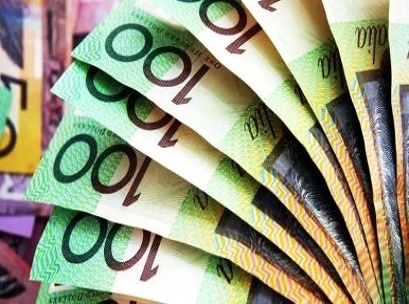
The Australian dollar has fallen Tuesday, buying 67.65 US cents from 67.84 US cents on Monday.
Yesterday, the local currency has found a sliver of support as the prospect of stimulus in China and Europe soothed risk sentiment, though the Sino-US trade dispute remains a nagging worry.
The Aussie was worth 67.80 at about midday (AEST) on Monday after China’s central bank on Saturday unveiled a key interest rate reform to help steer borrowing costs lower for companies and support the economy.
Also helping sentiment was growing speculation about government stimulus in Europe.
Germany has the fiscal strength to counter any future economic crisis “with full force”, Finance Minister Olaf Scholz said on Sunday, suggesting Berlin could make available up to 50 billion euros of extra spending.
At home, minutes of the Reserve Bank of Australia’s August policy meeting are due on Tuesday and should reiterate that rates could be cut again if needed to lower unemployment and get inflation moving.
Futures imply around a 76 per cent chance of another quarter-point cut to 0.75 pre cent in October, though the odds did widen a little last week when jobs data proved surprisingly robust.
An easing is fully priced for November, with another pencilled in by March.
Analysts suspect the RBA will be very reluctant to cut below 0.5 per cent given the pressure that would put on profits and lending in the domestic banking system.
Policy makers have recently said they would consider unconventional easing if required, but doubt it will come to that.
RBA Governor Philip Lowe speaks at the Jackson Hole central bank conference on Saturday and will likely have more to say on the policy outlook.
“We see below-trend growth and below-target inflation and a central bank which is running out of patience, and increasingly mindful of elevated global risks and policy easing by other central banks, which is blunting the currency-lowering impacts from its own easing,” said Nomura economist Andrew Ticehurst.
He is tipping cuts in November and February, and puts the chance of unconventional policy as high as 40 per cent.
“We still see further downside risk for AUD too, incorporating our cautious house views around global growth and trade tensions.”
All the chatter on stimulus meant bonds lost just a little of their huge recent gains.
The three-year bond contract eased 2 ticks to 99.325, while the 10-year contract lost 4 ticks to 99.0750.





